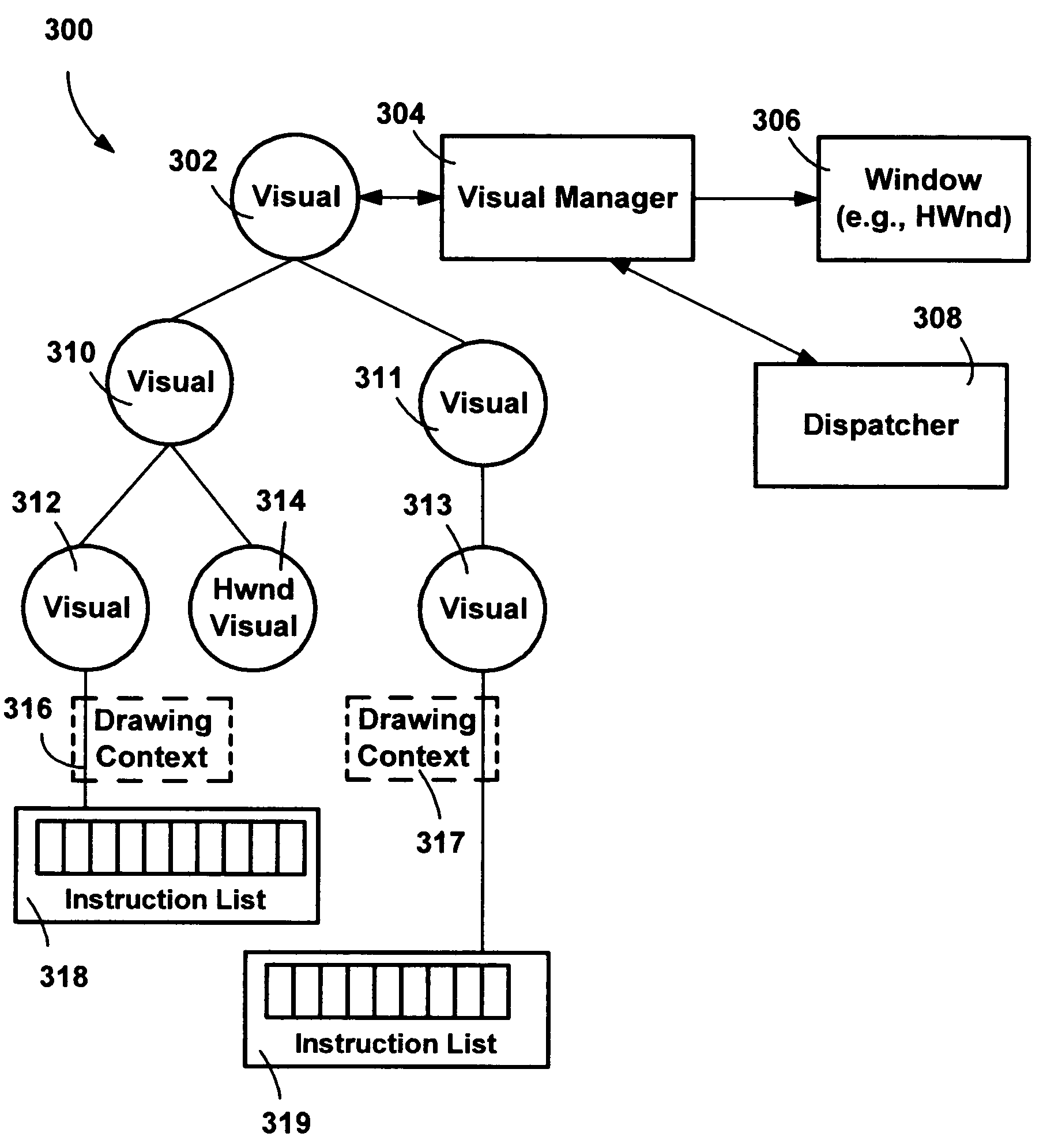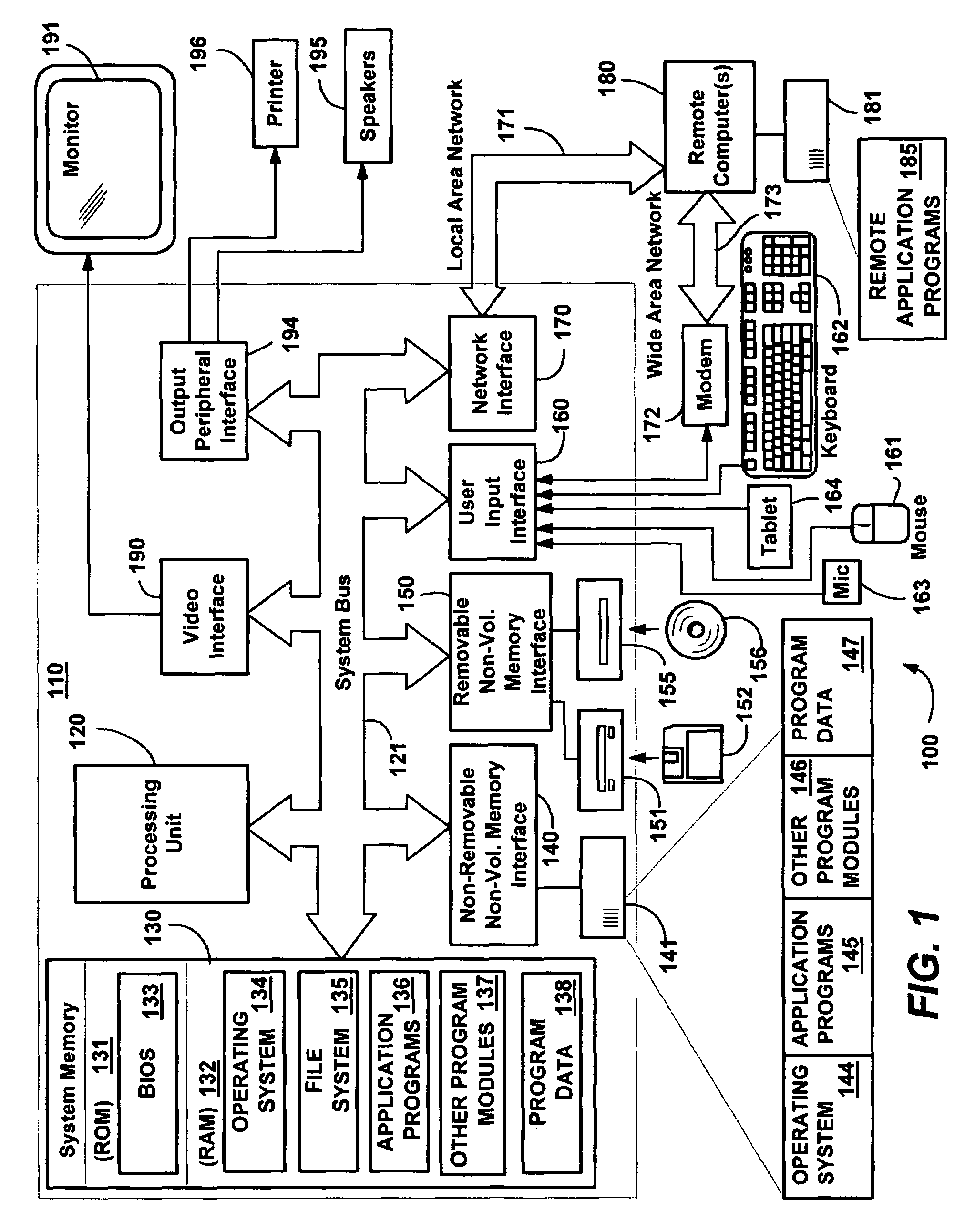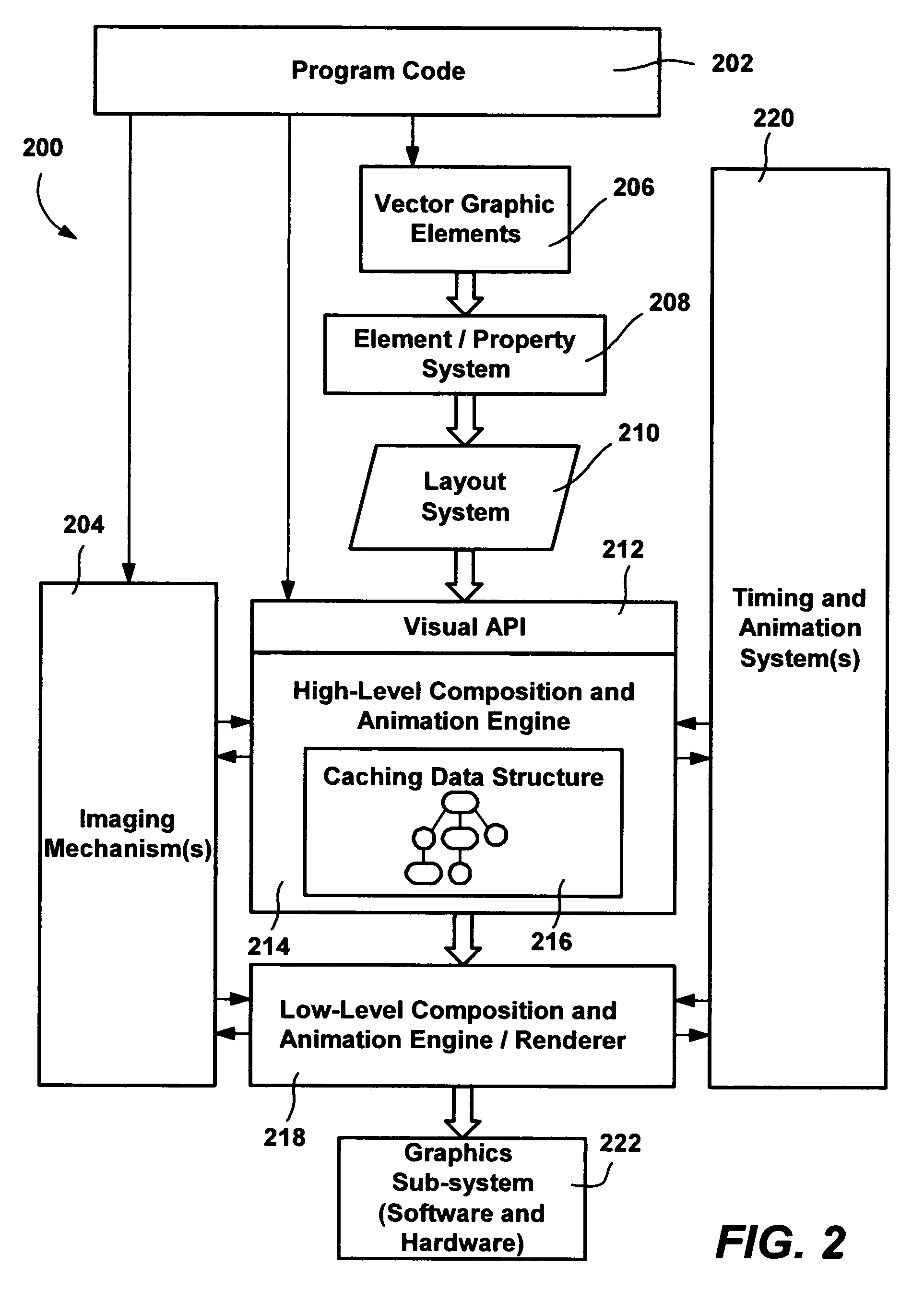Media integration layer
a technology of media integration and layer, applied in the field of computer systems, can solve the problems of visual and noticeable undesirable, and the limit of the traditional immediate mode model of accessing graphics on computer systems, and achieve the effect of not adversely affecting normal application performan
- Summary
- Abstract
- Description
- Claims
- Application Information
AI Technical Summary
Benefits of technology
Problems solved by technology
Method used
Image
Examples
examples
Valid an Invalid of Using Changeable Objects
[0327]The following section provides a summary of using and manipulating objects that derive from the Changeable class, by which objects, such as brushes, pens, and animations, are mutable as controlled by a programmer. Classes that derive from Changeable simulate mutability by automatically building an immutable version of themselves when used in a qualified use. As described above, a Changeable is considered used in a qualified use when the object is set into a Property System property, used as a sub-object in a complex Changeable object, or used in a DrawingContext command.
[0328]When developing applications with such objects, graphics and media system objects are generally created, set, used, and then never modified. For example, to set the background of a Button a programmer might use a SolidColorBrush, which derives from Changeable; but the programmer might never modify the button's background again over the course of the application....
PUM
 Login to View More
Login to View More Abstract
Description
Claims
Application Information
 Login to View More
Login to View More - R&D
- Intellectual Property
- Life Sciences
- Materials
- Tech Scout
- Unparalleled Data Quality
- Higher Quality Content
- 60% Fewer Hallucinations
Browse by: Latest US Patents, China's latest patents, Technical Efficacy Thesaurus, Application Domain, Technology Topic, Popular Technical Reports.
© 2025 PatSnap. All rights reserved.Legal|Privacy policy|Modern Slavery Act Transparency Statement|Sitemap|About US| Contact US: help@patsnap.com



